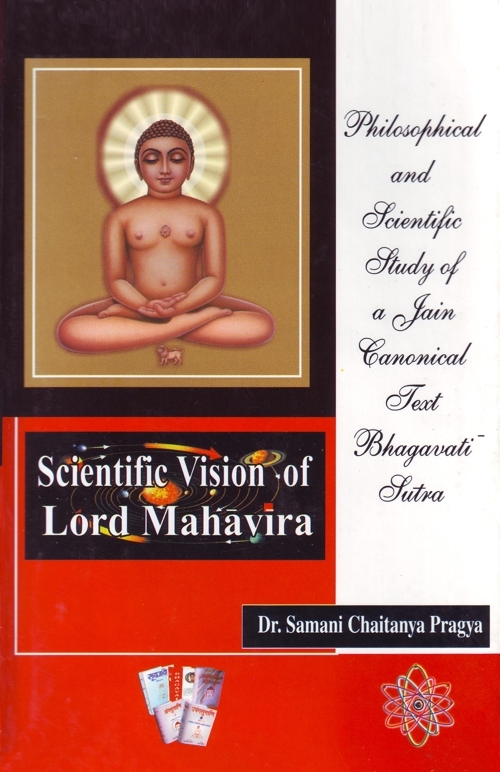The complicated problem of the existence of soul has baffled almost all the thinkers of the world. There have been philosophers who did not believe in an independent existence of the soul, like the Carvaka[1] in India and Thales,[2] Anaximander,[3] Anaximenes,[4] Heraclitus[5] etc. in Greek. During the time of Lord Mahāvīra such thoughts were not altogether absent. According to Sūtrakṛtāṅga,[6] 368 schools of thought were prevailing at that time. Some of them were not in favour of the existence of soul. They raised many cross-questions regarding the concept of soul. Lord Mahāvīra was one of the greatest founders of this concept of his time. Most of his philosophy is devoted to the discussion of soul in different contexts. He has attempted to prove its existence as an independent reality. The Bh.S expresses his view at various places in a very lucid and convincing manner.
In the text, we find two types of views regarding the existence of soul—non-materialistic about the emancipated (pure) being and materialistic about the worldly being.[7] Acārāṅga, the first Jain canon, suggests four ways to know the existence of soul: [i] doubt about it, [ii] the realization of 'I', [iii] substratum of consciousness and [iv] its manifold functions.
From the metaphysical point of view Sthānāṅga Sūtra[8] and the Bh.S[9] clearly accept the separate existence of two entities, viz, the living and nonliving. Both are independent and eternal. Acārāṅga, the oldest canon expresses the same view through animistic approach.[10] It states that all the things like earth, water, fire, air and vegetation are primarily living entities, changed into non-living only by weapon-operation on it.[11] Apparently it gives the idea 'the visible non-living world originates from the living ones due to weapon operation on them or death', which is very close to the terminal Upanisadic and Vedantic thoughts.[12]
The Bh.S displays the view of the opponent Kalodāi, Shelodāi etc. who did not accept that something which is not visible could exist.[13] Indrabhuti Gautama sees the same thinking in Viśeṣāvaśyaka-Bhāṣya[14]. Though the self cannot directly be seen through the senses yet, it is expressed through the sense experiences to a common man. It can be inferred only through its effects. The essence of the discussion that took place between Madduka and Lord Mahāvīra is that by the effects we can realize the existence of soul.[15 ]There are so many things in the world that are not visible, such as, the atoms, the air, the smell and so on, but do we not agree with their independent existence? The same is applicable to the soul. On the other hand, the soul is directly and fully perceptible to one who is free from all passions and whose knowledge is unobscured.[16] Refuting all the opposite views about the existence of soul the Lord answered in the following manner—"O Gautama! The soul is indeed directly cognizable to you as well. Your knowledge about it, which consists of doubt etc., is itself the soul. What is proved by your own experience need not be proved by other means of cognition. No proof is required to establish the existence of happiness, misery etc."[17]
Another argument is that - "If there is no soul, how do you realize 'aham' (the feeling of 'I')? How can there be a doubt whether soul is or is not? Or, if there is a doubt, in which case is this 'ahampratyaya' (the knowledge of 'I') justifiable."[18]
This argument is applicable only in the case of the beings who have mind.
The problem of doubt and of doubter is rather ontological. Just as the Samkhya system provides the logical arguments for the separate existence of puruṣa (soul) on the ground of adhiṣṭhāna,[19] Lord Mahāvīra proved the existence of soul on the ground of doubt. Mahāvīra said,—"If the object about which one has doubt is certainly non-existent, who has a doubt as to whether I do exist or I do not exist? Or, Gautama! When you yourself are doubtful about yourself, what can be free from doubt?"[20]
The thing to be considered here from metaphysical point of view is that substance cannot exist without qualities and qualities have no place absolutely independent of substance.[21] It means if the qualities are experienced, the experience of the substance is obvious. The Bh.S,[22] describes number of such qualities that are related to soul only. For example—right and wrong knowledge, perception, memory, etc. are quite evident to prove the isolated existence of soul. Soul is the agent of all the actions of every being, for without it, eighteen types of sinful acts (act of killing upon perverted attitude), and the act of desistence from them, different states of the soul, such as, desire to know, determination, retention, exertion, action, strength, energy, effort, vigor and developed and undeveloped or underdeveloped consciousness of being do not take place. All these psychological functions are centered in a conscious and sentient entity. Besides, feelings of pleasure and pain, various types of emotions, such as, anger, greed, pride, deceit, hate, attachment etc. are not possible unless we regard the existence of spiritual entity as the source of all these phenomena.[23]
(ii) Pravacanasāra; 1/32—...kevalī bhagavaṃ pecchadi samantado so jānādi savvaṃ niravasesaṃ
(ii) Syādvādama—jarī; p.19
(iii) Saḍadarśanasamuccaya; 9 - yatraiva yo dṛṣṭaguai sa tatra kumbhadivanniṣpratipak ṣametat / tathā'pi dehābahirātmatattva-matattvavādāpahatāī pathanti // 148 Scientific Vision of Lord Mahāvīra
(ii) Viśeṣā; 1558—nānādao na dehassa muttimattāio ghaḍasseva / tamhā nāṇaiguṇā jasa sa dehāhio jīvo //
 Dr. Samani Chaitanya Pragya
Dr. Samani Chaitanya Pragya

